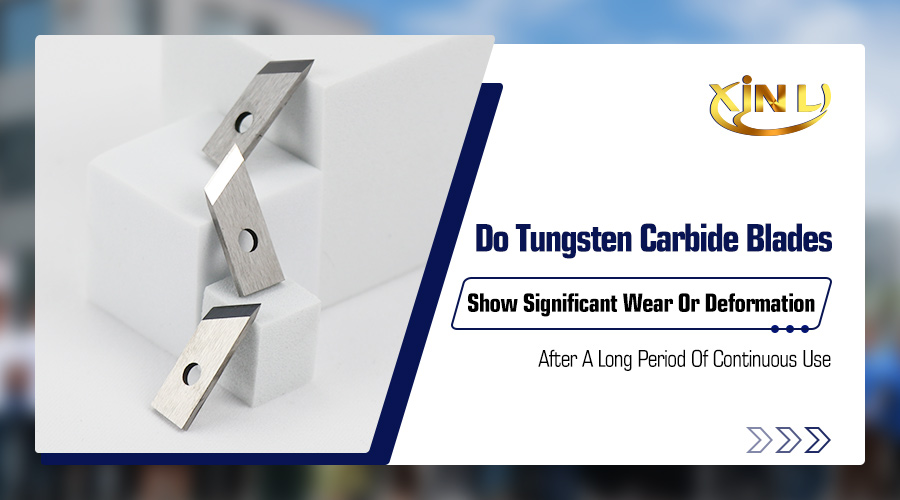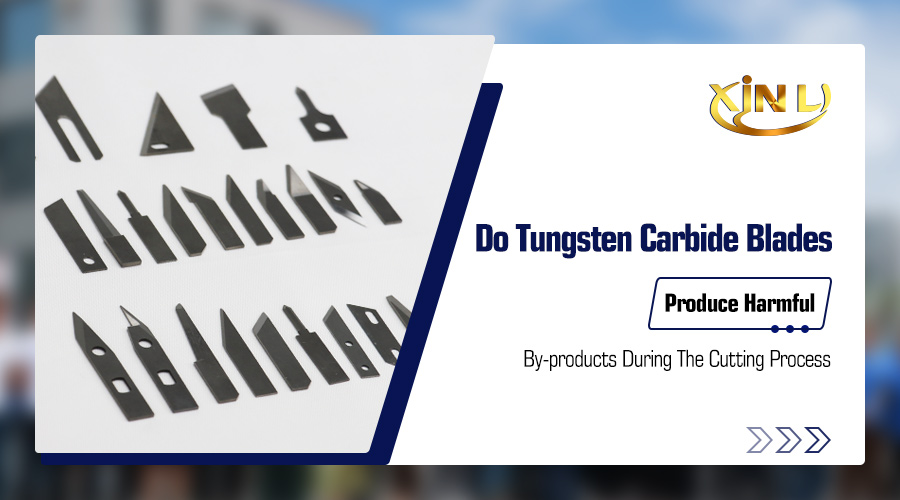In the precision manufacturing and metal processing industries, tungsten carbide blades have become the tools of choice for many processing tasks due to their excellent hardness, wear resistance, heat resistance and good toughness. However, after a long period of continuous use, any quality tool will inevitably face the problem of wear and deformation, and tungsten carbide blades are no exception. The purpose of this paper is to discuss the wear and deformation of tungsten carbide blades after a long period of continuous operation, to analyze the scientific principles behind them, and to propose corresponding mitigation measures.
Wear Mechanism Of Tungsten Carbide Blades
1. Oxidative wear:
Under the high-temperature operating environment, the cobalt (Co) bonding phase and tungsten carbide (WC) particles on the surface of tungsten carbide cutting blades are prone to oxidization reaction, forming oxides such as tungsten oxide (WO₃). These oxides are more fragile compared to tungsten carbide itself, easy to be removed in the cutting process, thus forming tiny pits on the blade surface, resulting in the cutting edge of the blade blunting, increased cutting force, and aggravated wear.
2. Mechanical Scratch Wear:
Mechanical abrasion wear is one of the most common forms of blade wear. During the cutting process, hard points in the workpiece material or impurity particles in the chips will rub against the blade surface, resulting in gradual removal of material. Especially in low-speed cutting, due to the low cutting speed, the cutting temperature is relatively low, at this time the mechanical abrasion wear becomes the dominant factor.
3. Adhesive wear:
When the cutting temperature rises to a certain level, adhesion occurs at the friction interface between the blade and the workpiece or chip. This bonding is sheared or torn during subsequent relative motion, resulting in the removal of material from the blade surface and the formation of bonded wear. The severity of adhesive wear is closely related to the chemical affinity of the blade and workpiece material.
4. Phase Change Wear And Diffusive Wear:
Under the combined effect of high temperature and mechanical stress, the microstructure of tungsten carbide blades may change, such as the growth of WC particles and the softening of cobalt bonding phase, resulting in a decrease in the overall hardness of the blade. At the same time, the elements in the blade (e.g., W, Co) will diffuse to the workpiece material, and the elements in the workpiece (e.g., Fe, Ni) will also diffuse to the blade, and this mutual diffusion phenomenon will further accelerate the wear of the blade.
Deformation Mechanism Of Tungsten Carbide Blades
Under the combined effect of high temperature and mechanical stress, the microstructure of tungsten carbide blades may change, such as the growth of WC particles and the softening of cobalt bonding phase, resulting in a decrease in the overall hardness of the blade. At the same time, the elements in the blade (e.g., W, Co) will diffuse to the workpiece material, and the elements in the workpiece (e.g., Fe, Ni) will also diffuse to the blade, and this mutual diffusion phenomenon will further accelerate the wear of the blade.
Measures To Mitigate Wear & Deformation
1. Optimize Cutting Parameters:
By reasonably setting the cutting speed, depth of cut and feed, the temperature and pressure during the cutting process can be reduced, thus slowing down the wear and deformation of the blade.
2. Use Coolant:
Coolant can effectively reduce the cutting temperature, reduce the occurrence of oxidized wear and diffusion wear, and also help to reduce the friction between the blade and the workpiece to reduce mechanical abrasion wear.
3. Regular Maintenance And Inspection:
Regular grinding and inspection of blades and timely replacement of badly worn blades can maintain the cutting performance of the blade and extend its service life.
4. Selection Of Suitable Blade Materials And Coatings:
According to the characteristics of the processed material and cutting conditions, choose suitable blade materials and coatings, such as adding TiC, TaC and other hard particles of tungsten carbide blades, or using nano-coating technology, which can further improve the blade’s wear resistance and heat resistance.
In summary, tungsten carbide cutting blades do show wear and deformation after a long period of continuous use. However, by optimizing cutting parameters, using coolant, regular maintenance and inspection, as well as choosing suitable blade materials and coatings, we can effectively slow down this process, extend blade life, and improve machining efficiency and quality.







